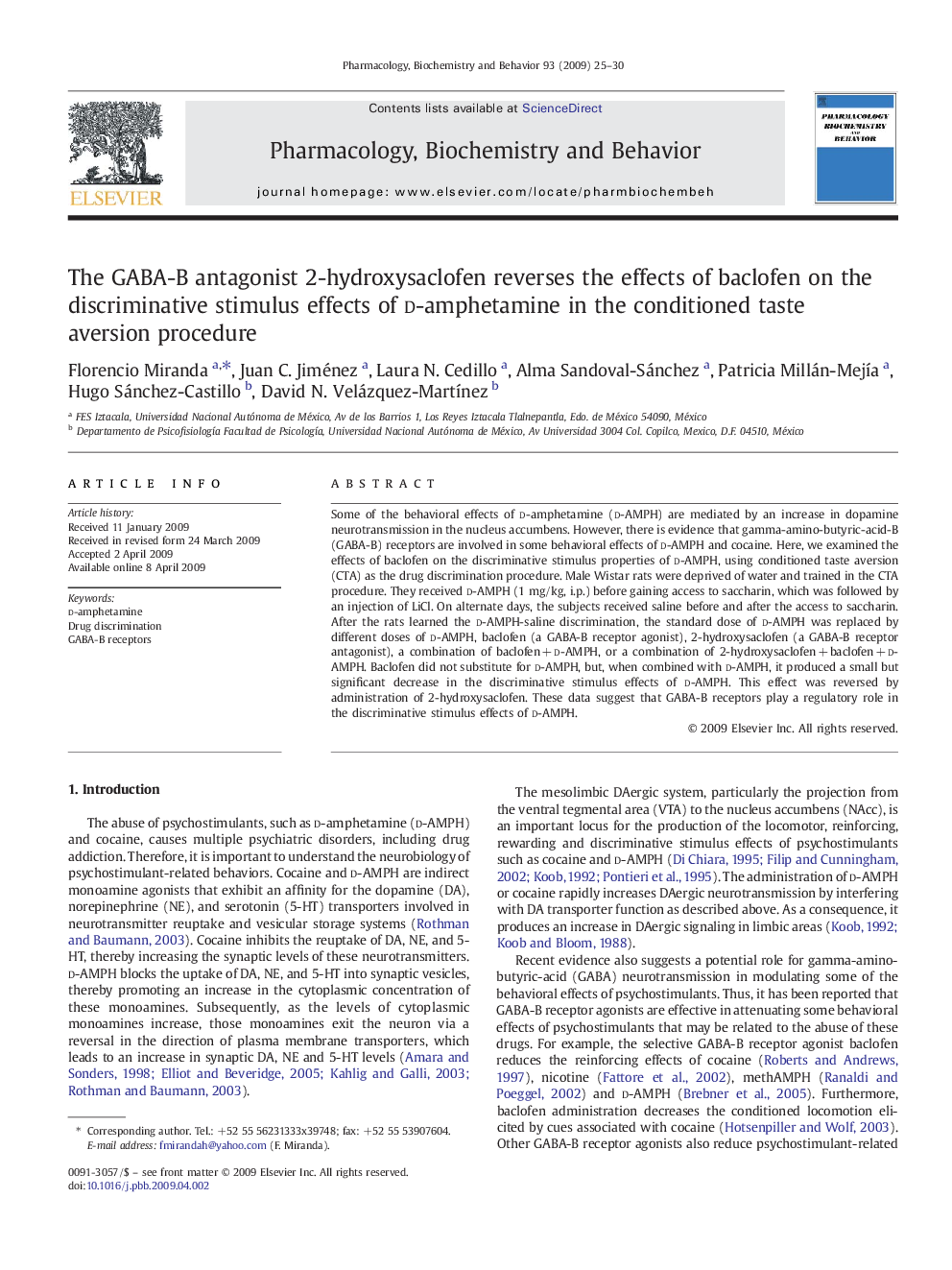| Article ID | Journal | Published Year | Pages | File Type |
|---|---|---|---|---|
| 2013620 | Pharmacology Biochemistry and Behavior | 2009 | 6 Pages |
Some of the behavioral effects of d-amphetamine (d-AMPH) are mediated by an increase in dopamine neurotransmission in the nucleus accumbens. However, there is evidence that gamma-amino-butyric-acid-B (GABA-B) receptors are involved in some behavioral effects of d-AMPH and cocaine. Here, we examined the effects of baclofen on the discriminative stimulus properties of d-AMPH, using conditioned taste aversion (CTA) as the drug discrimination procedure. Male Wistar rats were deprived of water and trained in the CTA procedure. They received d-AMPH (1 mg/kg, i.p.) before gaining access to saccharin, which was followed by an injection of LiCl. On alternate days, the subjects received saline before and after the access to saccharin. After the rats learned the d-AMPH-saline discrimination, the standard dose of d-AMPH was replaced by different doses of d-AMPH, baclofen (a GABA-B receptor agonist), 2-hydroxysaclofen (a GABA-B receptor antagonist), a combination of baclofen + d-AMPH, or a combination of 2-hydroxysaclofen + baclofen + d-AMPH. Baclofen did not substitute for d-AMPH, but, when combined with d-AMPH, it produced a small but significant decrease in the discriminative stimulus effects of d-AMPH. This effect was reversed by administration of 2-hydroxysaclofen. These data suggest that GABA-B receptors play a regulatory role in the discriminative stimulus effects of d-AMPH.
